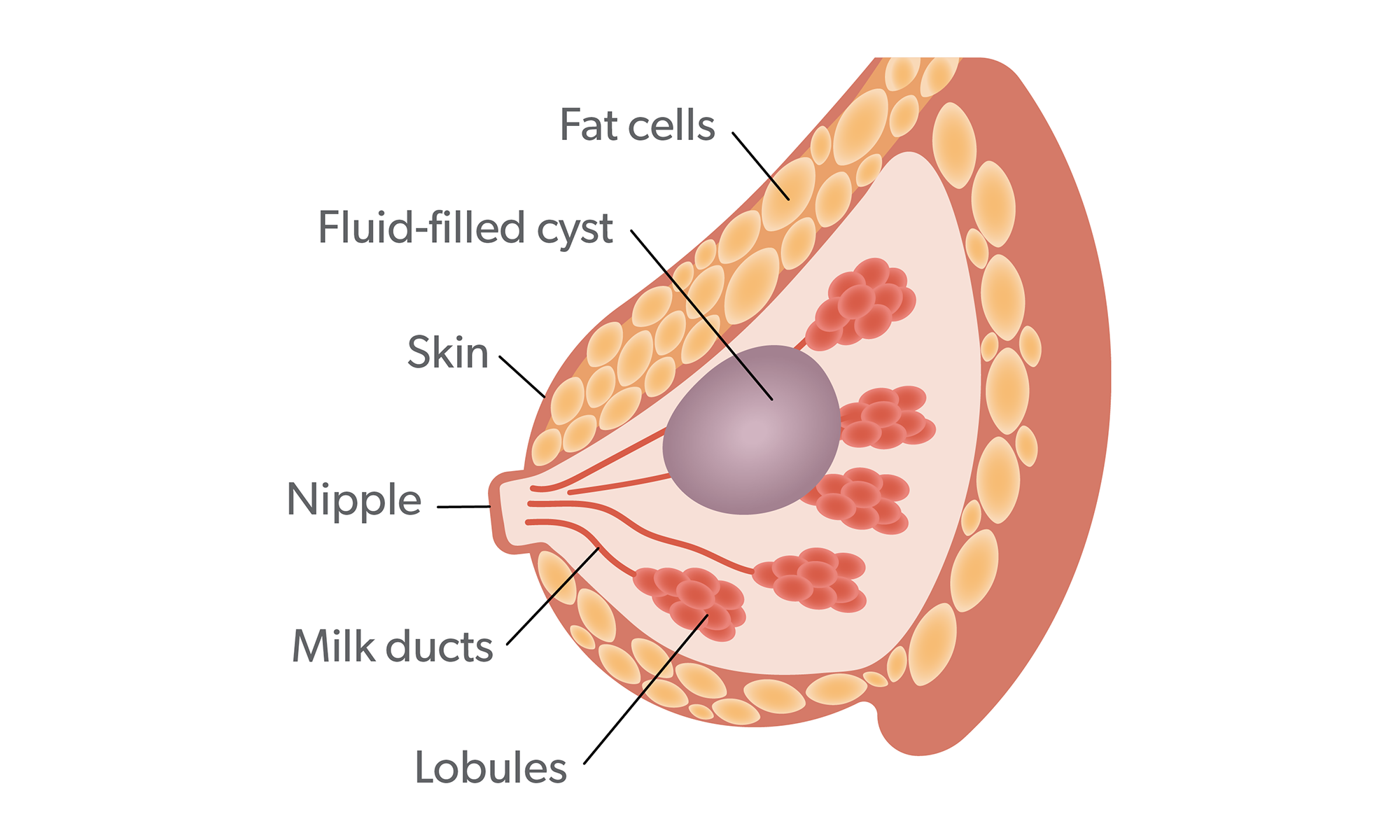Periductal mastitis

Periductal mastitis occurs when the ducts (tubes) under the nipple become swollen and infected.
Symptoms of periductal mastitis may include:
- a tender, hot or reddened breast
- liquid (discharge) from the nipple that is either bloody or non-bloody
- a lump that can be felt behind the nipple
- occasionally, a collection of pus (abscess) or an abnormal connection between a duct and the skin (fistula).
Treatment usually involves antibiotics, although the condition often recurs because the damaged ducts remain. In severe cases removal of the ducts is required. If the breast is painful, pain relief such as paracetamol can be effective.
Breast abscess

A breast abscess occurs when a painful pus-filled lump develops under the skin of your breast, usually following mastitis. The lumps may be red and swollen, feel hot, have pus or discharge from the nipple. A breast abscess may also be associated with a fever (high temperature), chills and a general feeling of being unwell.
Abscesses need to be drained, which is done with a syringe and needle if the abscess is small, but larger abscesses may require a small cut and drainage.
Mastitis or breast abscess in a non-breastfeeding woman requires investigation for an underlying clinical condition such as cancer.
Fibrocystic change

Fibrocystic change is the most common cause of breast lumps in women aged 30–50. Changes occur because some of the breast tissue overreacts to normal monthly changes in hormonal levels. This can lead to scarring around the ducts, which can block the duct and cause tiny cysts to build up. The lumps feel smooth and mobile. Breast tenderness or aching is common, this may be generalised or felt particularly in the upper, outer area of the breasts (near the armpit).
Lumps may fluctuate in size during the menstrual cycle and in some cases, there may be a green or brown nipple discharge which occurs spontaneously (without squeezing).
If the discomfort is mild, no treatment is required for fibrocystic breast changes. Moderate discomfort can be managed by wearing a properly fitted bra and pain medications, like paracetamol. Occasionally, larger cysts causing more severe pain may require aspiration (a doctor uses a needle and syringe to remove the fluid).
Fibrocystic changes in the breast do not increase the risk of developing breast cancer.
Breast cysts

Breast cysts are fluid-filled sacs. You may have a single cyst or a number of different sized cysts. Cysts may appear naturally as the breast alters with age, due to normal changes in the oestrogen hormone levels. During the menstrual cycle oestrogen causes fluid to be produced. Although you can develop breast cysts at any age, they’re most common in women over 35.
After the menopause (when your periods stop), as oestrogen levels fall, cysts usually stop forming. Women who have HRT may still get cysts. They may be too small to feel and only detected on imaging or they may be large enough to be felt as a lump. Large cysts may put pressure on other tissue in the breast and cause discomfort.
Cysts can’t be reliably diagnosed on clinical examination alone. Ultrasound will confirm whether the lump is solid or cystic (fluid-filled) and this should be performed before any cyst is drained.
Simple breast cysts are usually left alone. Sometimes the ultrasound will not show the typical appearance of simple breast cysts and a needle biopsy may be necessary to make sure they are breast cysts. If simple breast cysts are very uncomfortable, they may be drained to relieve pain. Often breast cysts come and go or decrease or refill or return.
